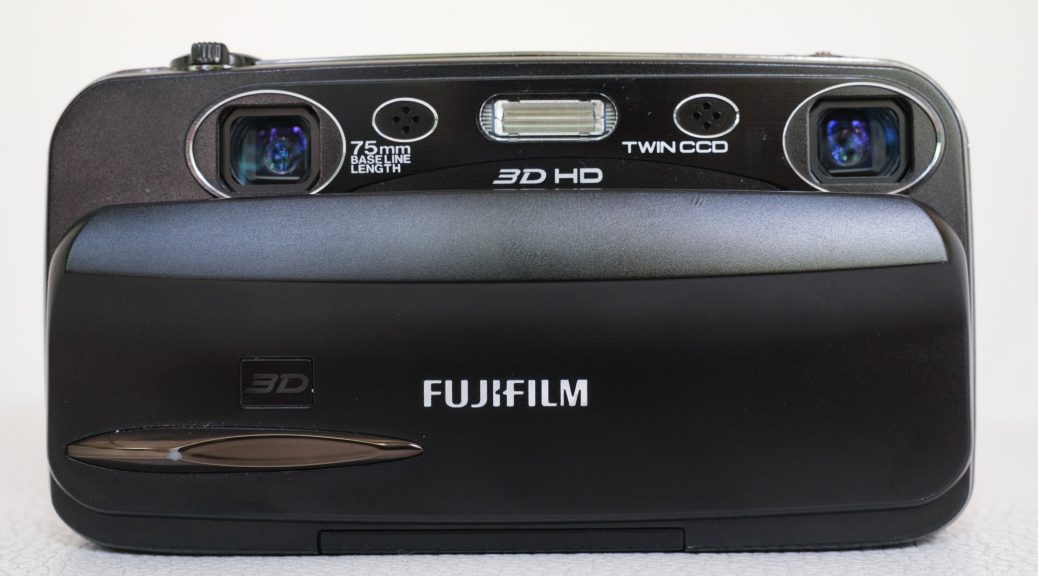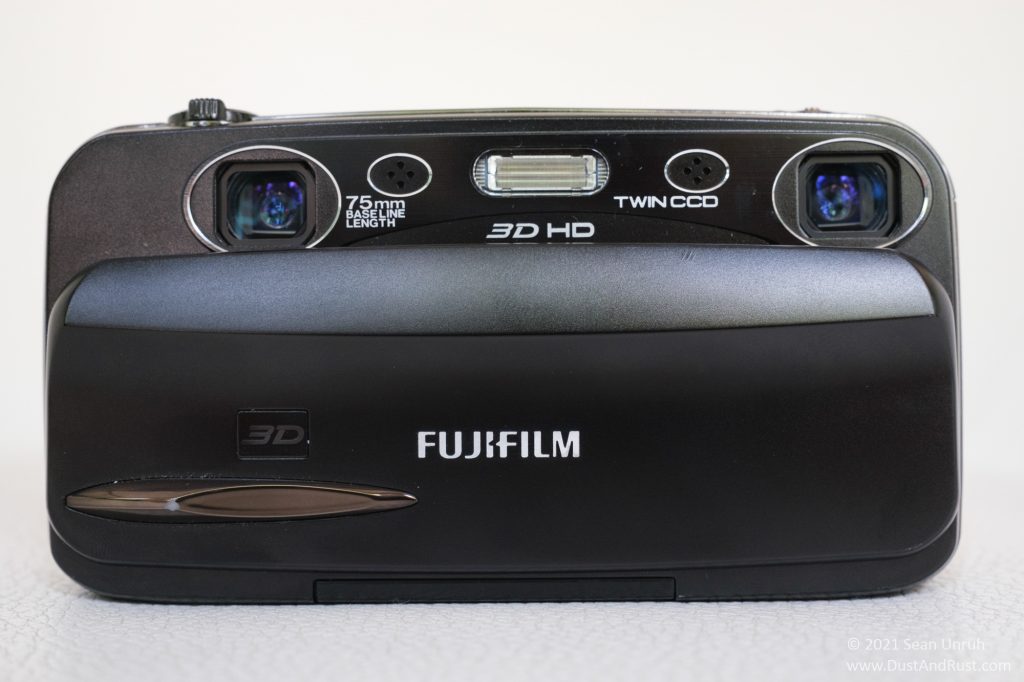
FujiFilm released the Finepix W3 3D in 2010. I purchased my camera in 2014 on Amazon for $190 as a brand new import from Japan. The 3D TV craze had pretty much died by then, and while according to WikiPedia, the camera initially sold well, it was eventually discontinued and a FujiFilm never released a follow up model. While there have been various cameras with 3D capability since then, like the Lenovo Mirage and the Vuze XR 3D VR nothing has really surpassed the FujiFilm camera for 3D photography in my opinion.
First, let me start off by talking about why a camera made in 2010 is not ideal…
- It features 2 tiny 10 megapixel sensors, that are very bad in low light, and have very bad dynamic range (blown highlights are common)
- The battery life is very bad… i have 3 batteries, and I usually bring them all when I take the camera out.
- The autofocus is slow and inaccurate, the auto white balance is bad, and the exposure controls are not intuitive.
- Due to the placement of the lenses, you have to try really hard not to get your fingers in the way.
- The built in flash is positioned in the worst possible place, and is basically unusable.
Summary: The camera is not good in any kind of way you would expect a modern camera to be. But… it does do the following :
- It takes 2 photos at exactly the same time, with lenses spaced at about the same distance as the human eyes, in a form factor that easily slips into a coat pocket or bag.
- It actually has an LCD that can display the images in 3D!
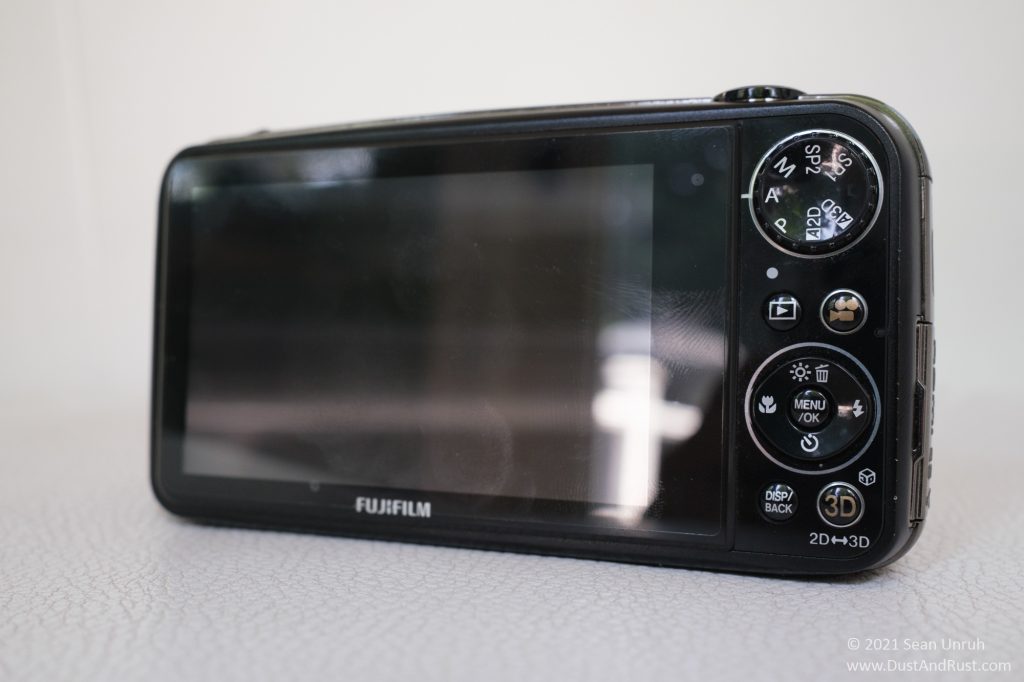
Ok, so we have a camera that takes 3d Pictures. The images are in a format called MPO. You can read about MPO files here, but it is basically 2 jpeg images (left and right) imbedded in a single file. In fact, if you rename an .MPO file to .jpg, you can import it into Lightroom, and view them in your catalog, but you will only see the left image. Since Lightroom will not modify your original files, you can always rename it back to .MPO if needed.
When taking 3D photos, you want at least 6 to 10 feet of distance between you and your subject. Try to keep distracting objects like tree branches out of the foreground. You want to have some separation between your subject and the background to create a greater feeling of depth. Finally, keep your fingers off of the lenses!
After you take the picture what do you do with it? How do you share it? How can you see it in 3D without using the camera?
Step 1. Download StereoPhoto Maker at : https://stereo.jpn.org/eng/stphmkr/
Step 2. Watch a bunch of YouTube Videos : https://www.youtube.com/results?search_query=stereophoto+maker
Step 3. Spend a lot of time figuring out what method works best for you!
You can download this original MPO image to play with : dustandrust.com/images/DSCF8586.MPO
The simplest way to share 3D images is the old wiggle-gif :
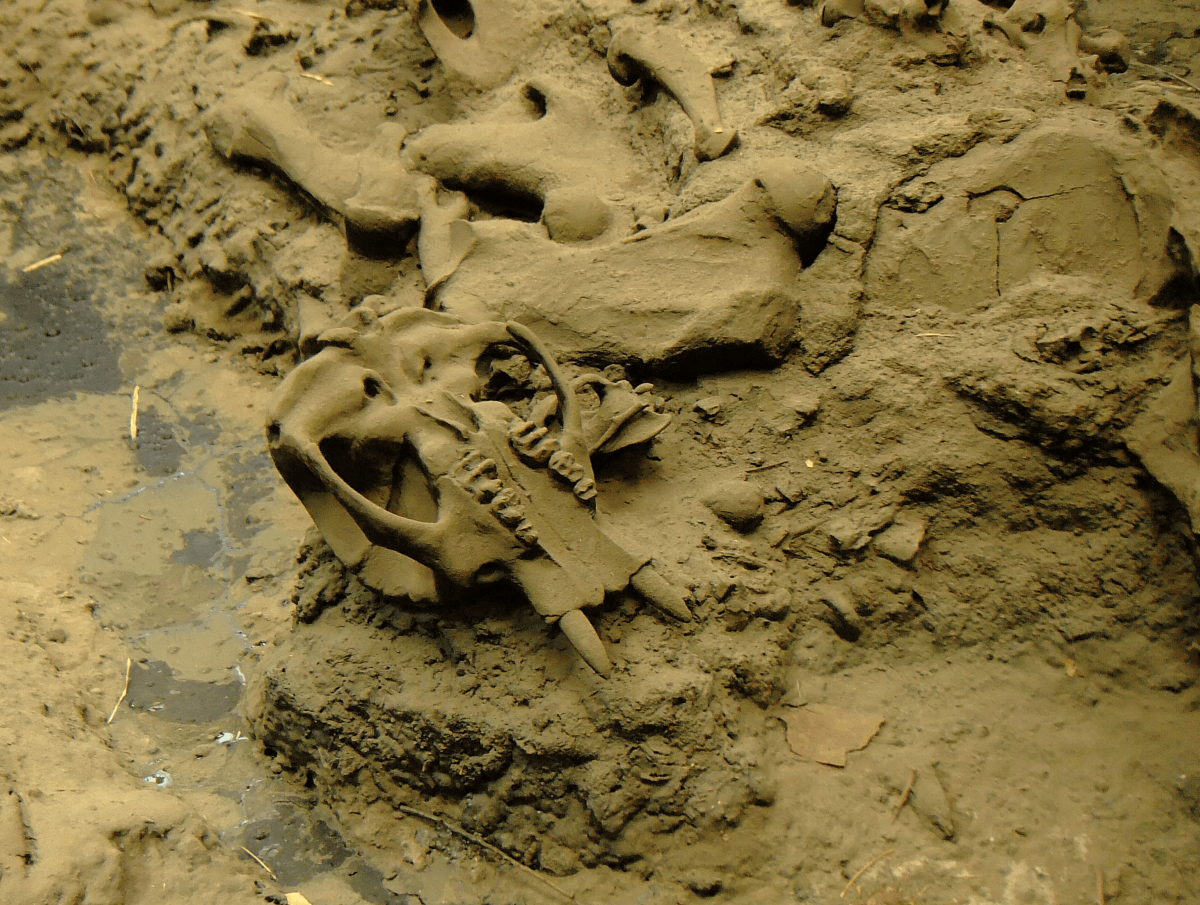
Another option is to go back to 1950’s technology with old school 3d glasses and create an anaglyph image :
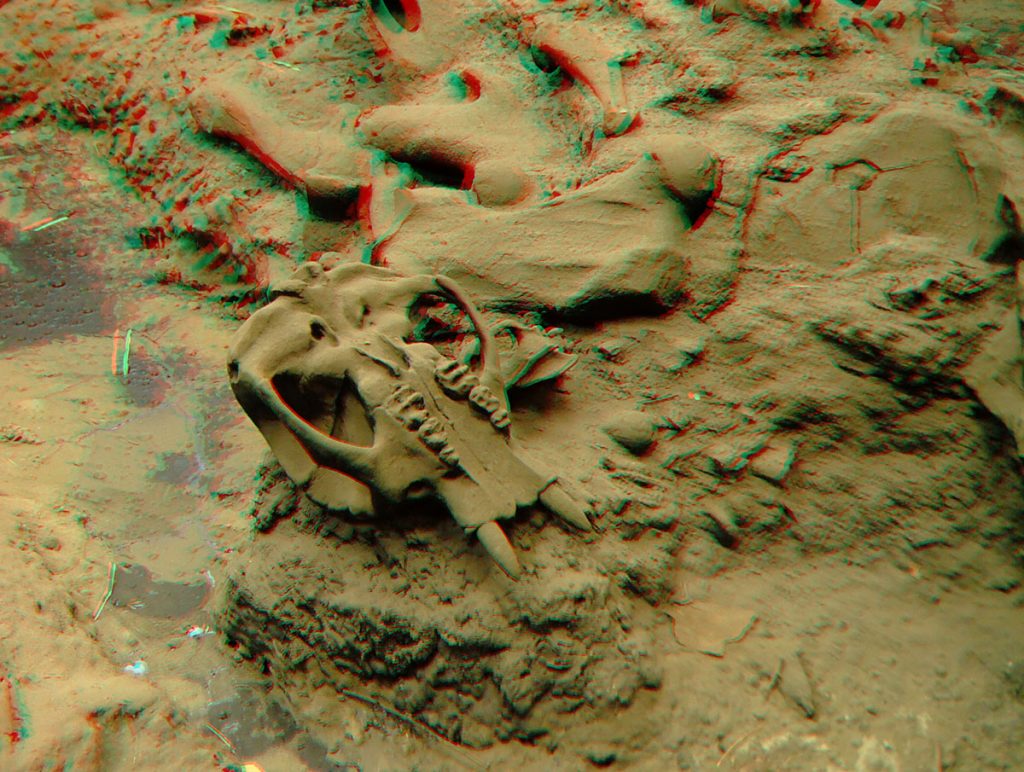
StereoPhoto Maker also lets you create Lenticular Images! Basically you buy some Stereo Lenticular lenses from a company like Vue-Thru. I purchased these 5×7 lenses. To make a long story short, this requires a lot of trial and error. Lenticular works better with more than 2 images, and while it might work ok for some stereo images, it works best if you have 7 or 8 images created using depth maps… too much to discuss here.
So where does that leave us. I present you with the best way, in my opinion, to view the images created with this camera. A technology so old, it was all the rage during the 1800’s :
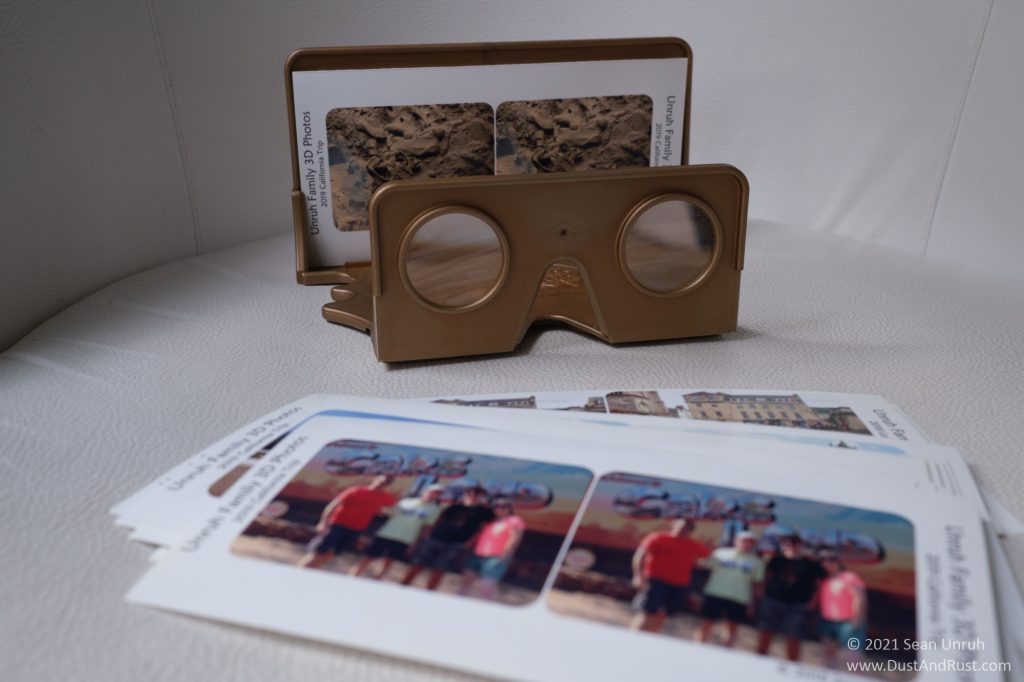
StereoPhoto Maker lets you easily print Stereograph Cards, and all you need is a viewer like Brian May’s (yes the guitar player from Queen!) Owl Viewer. Brain May is a very interesting guy. He has a website dedicated to stereo photography : LondonStereo.com. Check out some of his books on Amazon.
Here are some more 3D related links you may Interesting :
- Library of Congress Stereograph Collection (Download them and print at home!)
- Robert N. Dennis collection of stereoscopic views from the NYC Public Library
- How do holograms work? Find out here!
- The Looking Glass Factory – 3D Lightfield Viewer
In summary, the FujiFilm 3D W3 is not a camera for everyone. There are other options… but over 10 years later, it is still a viable and popular option for digital 3D photographers to consider. A message to FujiFilm : Please make us an updated version… I promise we will buy it!
